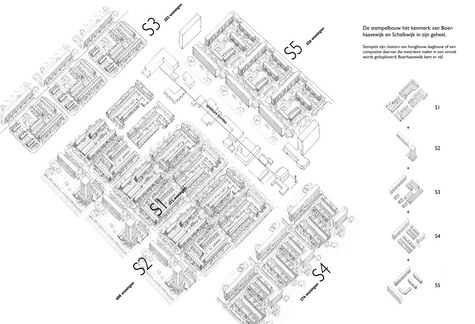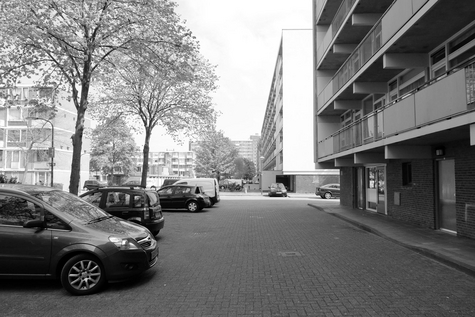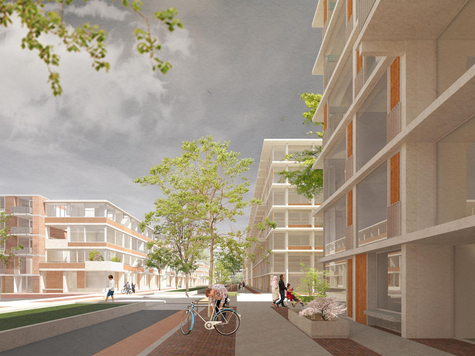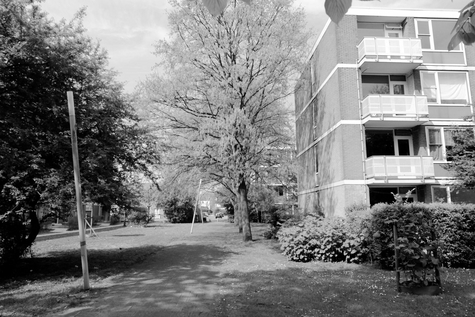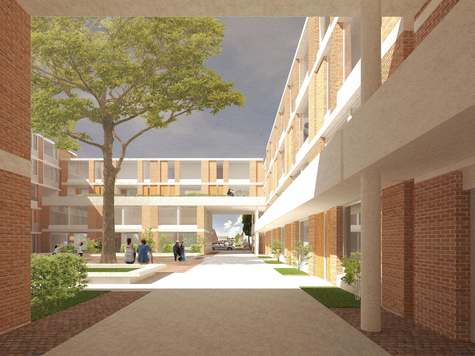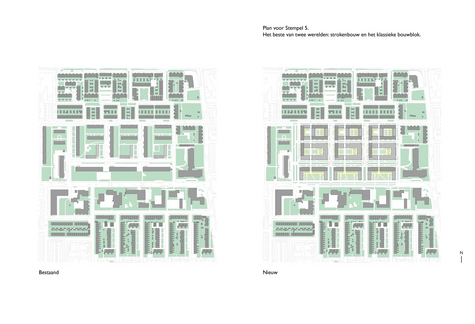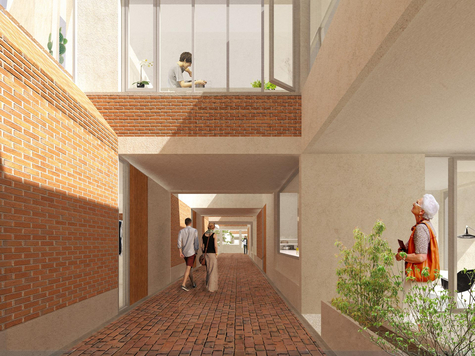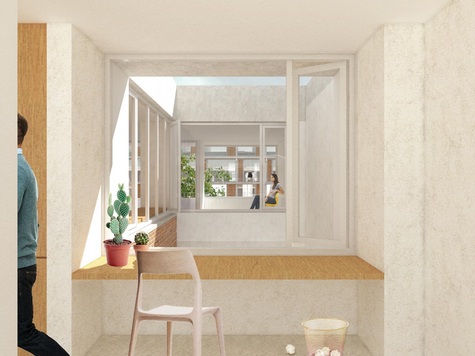Max Meijer
- Contact
- LinkedIn
De Transformatie van Schalkwijk - Een tweede leven voor de Naoorlogse woonwijk
In the 1960s, people started building a new future. A future that had arisen from the large-scale housing shortage after the Second World War. With much anticipation, new districts arose outside the cities, where people dreamed of a world of equality, a great sense of community, and spacious and safe housing. System building ensured that they could build quickly and efficiently. Gallery flats, flats accessed from a common entrance hall and terraced houses rose like house plan homes from the ground.
The residential district Schalkwijk in Haarlem was one of the urban development districts of the Netherlands. Within 10 years, 10,000 homes were built here. I grew up in the Boerhaave neighbourhood of Schalkwijk. I had a good childhood here, but the dream that they had in the 1960s has changed. The streets are not alive, as a result of the way in which the buildings are connected. They are long strips, with lots of parking spaces and the plinths are closed. There is an abundance of public space, as a result of which there is no order and meaning.
And the Netherlands has had a housing shortage now for 57 years. The pressure on the cities is enormous, the population and especially the number of households continue growing, and the housing production is lagging behind. Urban expansion sometimes seems like the only solution, because city centre building is difficult. I think there is also another solution. Schalkwijk as a post-war residential district can solve the housing shortage and conversely Schalkwijk can change as a result and be given a totally new lease of life. By transforming the district, you can add capacity and quality.
Schalkwijk has a characteristic urban design that is typical of the post-war residential district. Schalkwijk is built namely out of stempels (repetitive building block configurations). These are compositions of buildings, for example, terraced houses together with a flat accessed from a common entrance hall, which are repeated numerous times in the same way. Different stempels are used in Boerhaave, which subsequently lead to the layout of the district. These stempels each have their own quality, but have also led to the district becoming divided due to the monotone nature of the house types and its residents. This research revealed Stempel 5 is most in need of change.
In my proposal. the two worlds of the strip building and the classical building block are combined, leading to the best of both worlds. By making new loops on the existing flats and connecting flats with each other, they will change into building blocks with courtyards. By subsequently intersecting these again with axes , various walking routes will arise. Whereas only the street and the entrance to the building were previously the spatial experience, this stempel will now be given a rich layer public spaces.
In addition to adding the new buildings, the existing ones will also be tackled. Homes on the dark, low galleries will be transformed into maisonettes on a light gallery that is twice as high. Closed plinths will be transformed into homes, as a result of which there will be life at street level. And the new buildings will form an upper street on a higher level, which will connect the courtyards with each other via the existing flats accessed from a common entrance hall.
All these changes will ensure that a wealth of house types will arise, focused on the enormous variation of types of households nowadays. By mixing all these types of people, from young to old, from family to single, that can live in one stempel together.
As a result of this, Schalkwijk can be an example for other post-war residential districts. Because in this way, the number of homes will be doubled and you will give the district a second life.
Commission members: Wouter Kroeze (mentor), Floris Alkemade, Uri Gilad. Additional members for the exam: Jarrik Ouburg, René Bouman.

